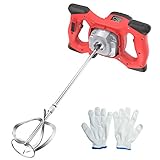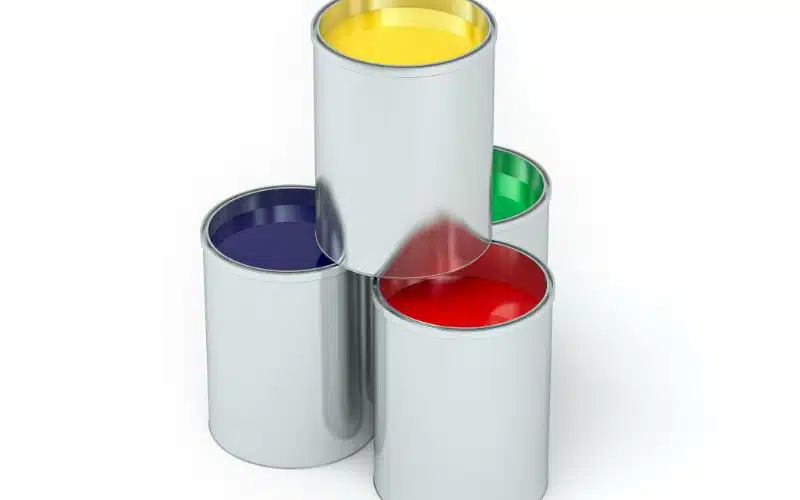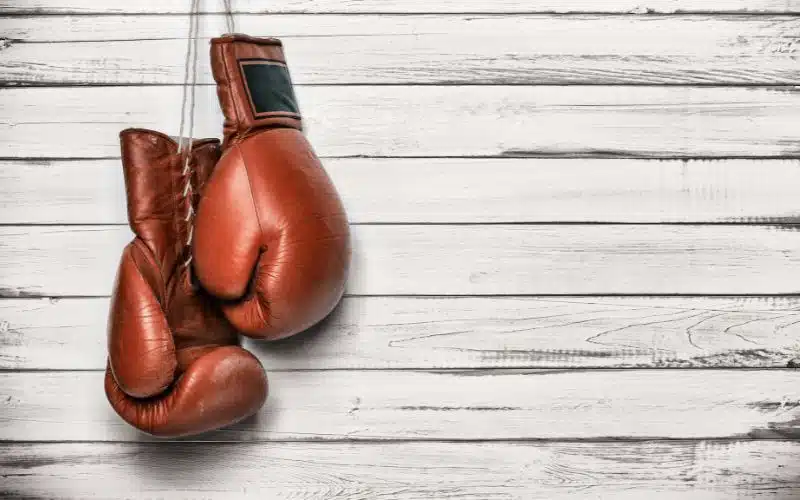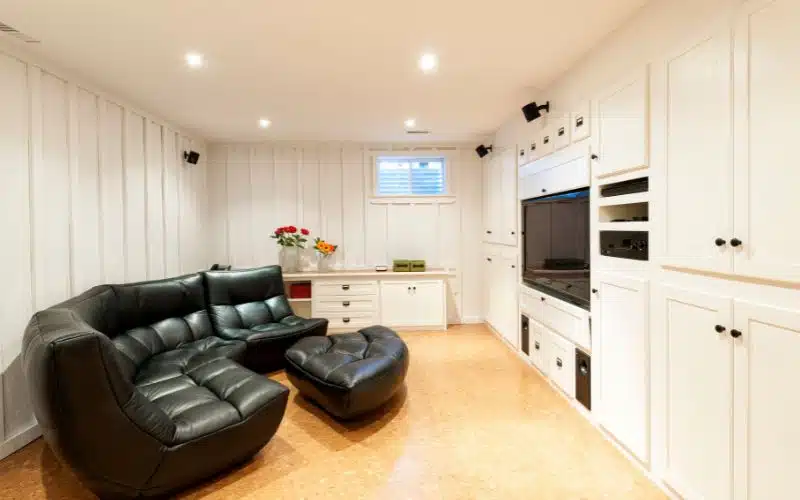Dish soap in drywall mud might sounds like a strange mix, right? But this combo is a hidden gem in the world of home repairs.
It’s like finding out that chocolate tastes great with chili! When you mix a little dish soap into drywall mud, it works wonders!
The mud gets really smooth and spreads over walls easily, without any lumps or cracks. It’s a cool, simple trick that makes a tough job fun and almost like magic.
So, let’s dive into this surprising secret and see how a drop of dish soap can change the game in drywall mudding!
Enhance your drywall mud with just 3 tablespoons of dish soap per bucket. This simple trick ensures smoother application, fewer bubbles, easier sanding, and better adhesion, giving your walls a professional finish.
Why Do You Add Dish Soap to Drywall Mud?
When you’re working with drywall mud, you aim for a smooth, bubble-free finish. Adding dish soap to the joint compound keeps it smooth and helps avoid bubbles.
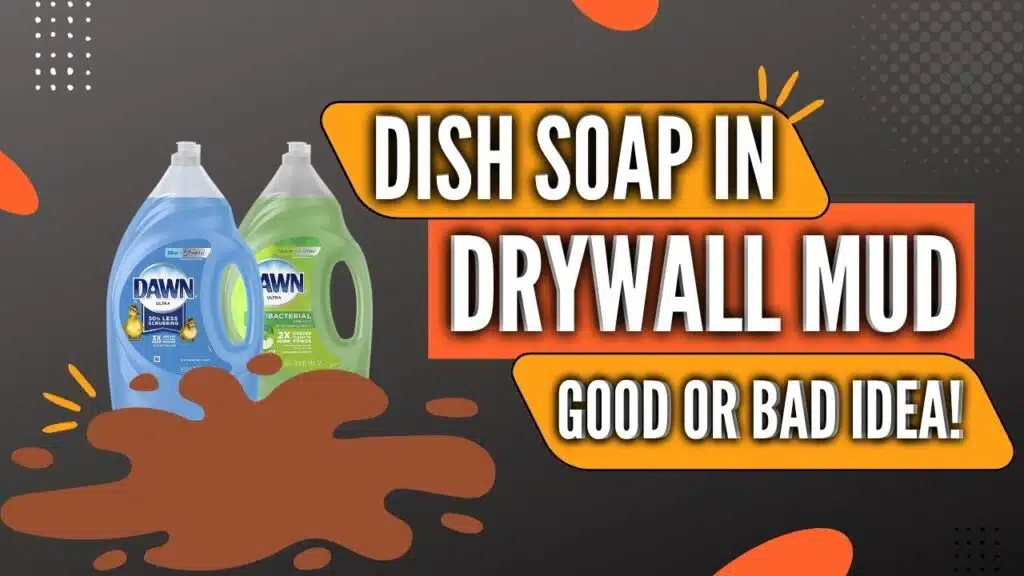
Benefits of Adding Dish Soap:
- Smooth Mix: Achieves a creamier texture for your drywall mud.
- Bubble Reduction: Lessens the chance of unsightly bubbles on your walls.
Remember to mix properly for consistency. This prevents any lumps and ensures an even coating during taping of drywall seams.
Here’s how much to use:
- For a bucket of drywall mud, use 3 tablespoons of dish soap
- Add a bit of water to improve the mixture’s lifespan
When you mix, use a drill and a mixing paddle. This ensures that every part of the mud is mixed well with soap and water. Be careful to stir gently to avoid creating more bubbles.
Last update on 2024-01-07 / Affiliate links / Images from Amazon Product Advertising API
Last update on 2024-01-07 / Affiliate links / Images from Amazon Product Advertising API
Apply the mud thinly. If it’s too thick, it won’t spread well and will be harder to sand later. If the mixture is wetter, it spreads easier and leaves a better finish.
Remember, fewer layers of properly applied mud mean you’ll spend less time sanding. By using basic tools and additives, like dish soap, you improve the bonding of the layers.
Drywall mud powder, when mixed with water and a bit of dish soap, can also benefit from this simple trick. It’s not just about the additives though; it’s also about how you handle them.
A good mix, careful application, and the right amount of dish soap can make all the difference in your drywall project.
Benefits of using dish soap in drywall mud
- Better Smoothness: When you add a bit of dish soap to your drywall mud, it makes the mixture smoother. Smooth mud means your walls look even and professional.
- Fewer Bubbles: Nobody wants bubbles on their walls. Dish soap acts like a magic bubble remover. Your mud stays bubble-free for a perfect finish.
- Easier Sanding: Once it’s dry, you’ll find sanding easier. Smoother mud sands down without much effort, leaving a fine finish.
- Less Shrinkage: Drywall mud can shrink as it dries. Dish soap helps reduce this, so your work stays the way you intended.
- Better Adhesion: Your mud will stick better to the walls. This improves bonding and makes your work more durable.
- Quick Drying: The soap can help the mud dry faster. This saves you time so you can move on to painting sooner.
By using dish soap, you’re making your drywall job easier and your walls smoother. Remember, a little goes a long way, so use the right amount for the best results.
How to use dish soap in drywall mud
You can improve your drywall mud by adding dish soap. Dish soap makes the mud smoother.
It helps you to apply the mud easily and reduces the chances of imperfections.
Here is how you mix dish soap with drywall mud:
- Measure the Drywall Mud: Use the amount of mud you need for your work.
- Add Dish Soap: For every bucket of mud, add three tablespoons of dish soap.
- Mix Well: Stir the mixture until the soap is fully blended with the mud.
- Test the Consistency: The mud should be smooth, not too thick or runny.
- Apply to Wall: Use your tools to spread the mud on the wall.
Remember: Too much soap can weaken the mud. Use a little water if needed. This will help your drywall mud last longer and work better.
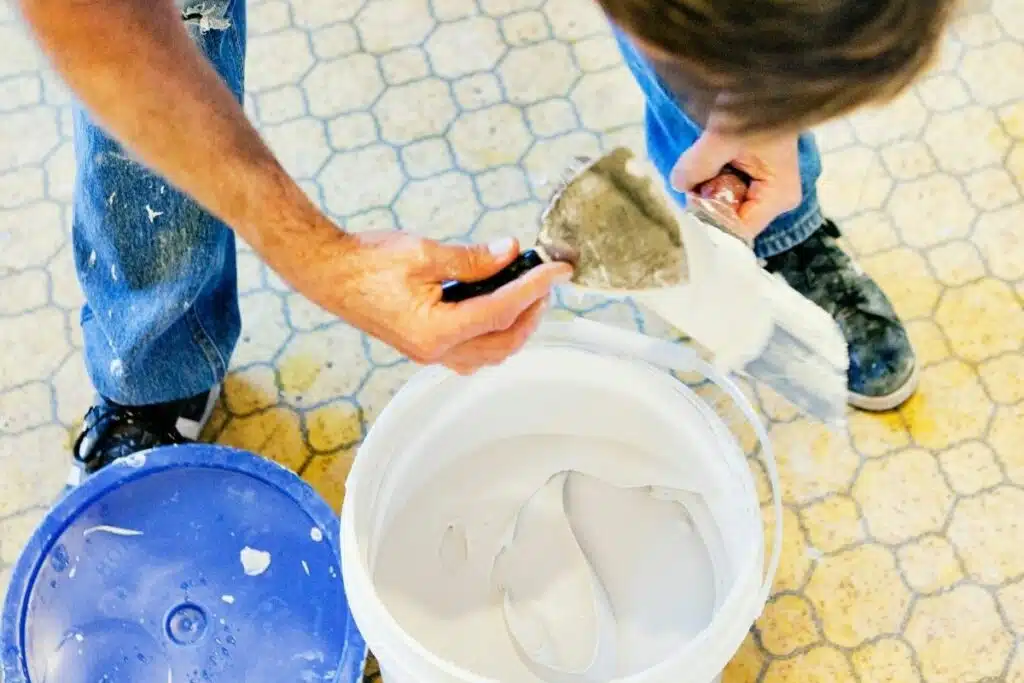
Common Misconceptions about Using Dish Soap in Drywall Mud
- Bubbles are always bad: Many people think adding dish soap to drywall mud will create bubbles. Actually, a small amount of dish soap can help prevent bubbles by reducing surface tension.
- Weakens drywall mud: Some believe dish soap weakens the mud. In truth, dish soap has no negative effect on the strength of drywall mud when used in appropriate amounts.
| Misconception | Reality |
|---|---|
| Dish soap makes drywall mud less durable. | Dish soap does not change the durability of mud. |
| Using dish soap is a professional shortcut. | Even professionals use dish soap for smoother finishes. |
- Dish soap changes color: You might worry dish soap changes the mud’s color. This is not the case; the soap doesn’t affect the color once the mud dries.
- Soap can cause cracking: Some say dish soap causes mud to crack. If you use the right type of dish soap in small quantities, it will not cause the drywall mud to crack.
Remember, the key is to use dish soap sparingly. Too much soap can lead to issues, but the right amount can help you achieve a smooth finish on your drywall.
Why Does Drywall Mud Have Bubbles?
When you apply a very thick layer of drywall mud to a painted wall, it may result in bubbling. It’s crucial to scrape the surface properly or else air bubbles appear.
Mixing the mud too much introduces air pockets. This is a common cause of cracks and sagging in your finished wall.
Prevent Bubbles:
- Ensure thorough surface preparation
- Remove all drywall dust
- Use fresh, high-quality mud
- Avoid old or lumpy mud
Incorrectly preparing your wall invites pock marks and pinholes. Always clean the wall meticulously before starting.
Quality impacts your result. If your mud is low quality or old, it might be prone to shrinkage and bubbling.
Common Bubble Causes:
| Cause | Result |
|---|---|
| Too thick application | Larger bubbles |
| Not scraping | Smaller air pockets |
| Overmixing | Cracking |
| Poor preparation | Pock marks |
| Low-quality mud | Pinholes |
Adding too much soap or water to the drywall mud can also leave you with fish eyes.
These are small, crater-like formations sprinkled throughout your drywall application. Be careful with additives like soap to avoid these imperfections.
Should I Add Dish Soap to My Drywall Mud?
When working on your drywall, achieving a smooth, bubble-free finish is crucial. Adding a small amount of dish soap to the drywall mud can be a game-changer.
It helps to thin the mud, making it easier to spread for a better finish. However, be cautious not to overdo it as too much can weaken the mixture.
Tips for Mixing Drywall Mud:
- Use small batches with rapid-setting mud to prevent it from drying out too quickly.
- Avoid high-speed mixing with a drill, as it can trap air and create bubbles.
- Stir by hand for greater control over consistency and fewer imperfections.
Benefits of Dish Soap:
- Easier to sand: A smoother mud means less effort during sanding.
- Stronger bond: Soap improves the mud’s adhesion, reducing the chances of cracks.
- Smooth seams: Evenly mixed mud leads to seamless joins between drywall sheets.
Do’s and Don’ts:
- Do adjust mud consistency to prevent bubbles.
- Don’t plunge mix, as it adds unwanted air.
- Do aim for a final coat that’s easy to work with.
- Don’t overmix, keeping the finish coat bubble-free is your goal.
By following these finishing tips, you are more likely to achieve that professional quality and stronger bond required for lasting results. Remember, patience and attention to detail will take your drywall finishing to the next level.
